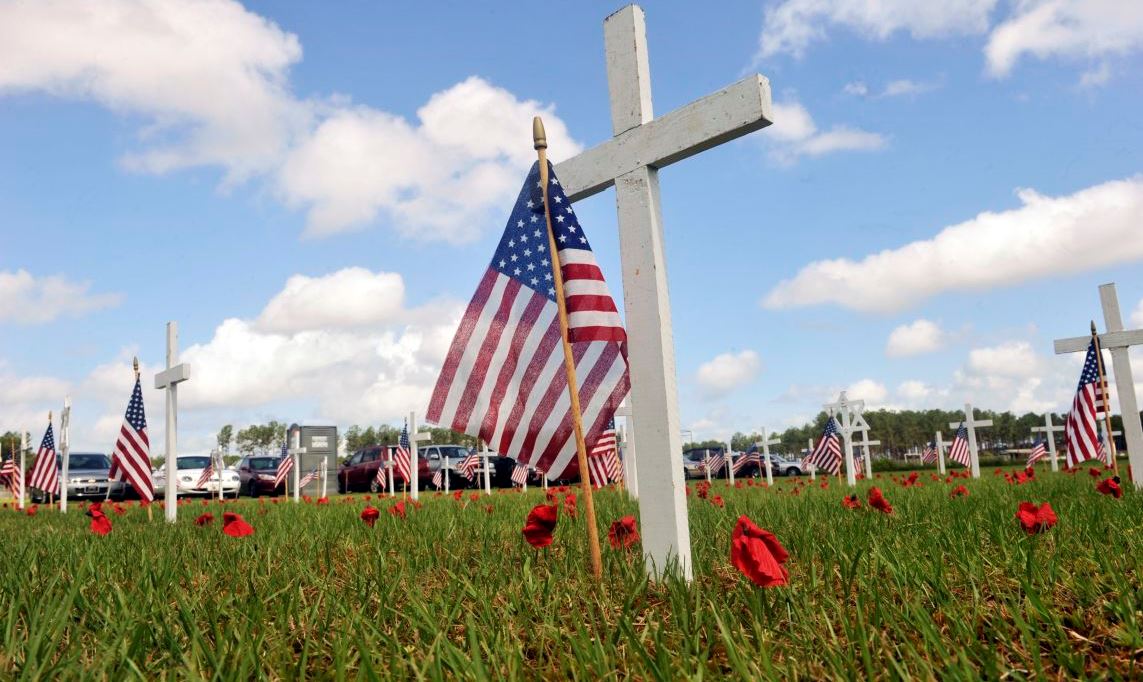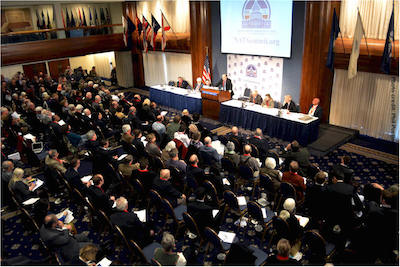A Nation That Doesn’t Know War: America Celebrates Memorial Day
Jun 6 2018 / 1:00 pm
Wednesday, May 30th, was Memorial Day in the United States. The commemoration began in 1868 shortly after the American Civil War, when townsmen in several communities came together to decorate the graves of the fallen on the last Monday in May. The practice began in the northern states but soon spread to the south and the annual remembrance ceremony soon took on the name Decoration Day. As wars proliferated in the twentieth century the commemoration eventually lost its association with the Civil War and was increasingly referred to nationally as Memorial Day, eventually becoming a federal holiday.
The American Civil war killed 655,000 soldiers, more than all other U.S. wars before or since combined. It was the first modern war in that it relied on railroads and steamships. The North also destroyed the livelihoods of and deliberately starved civilian populations to reduce the South’s will to resist. It was a war fought on U.S. soil and experienced first hand by the American people.
Today Memorial Day has largely lost its connection with dead soldiers and is instead best noted for being regarded as the first day of summer for recreational purposes. Beaches open up, the lifeguards come out and the smell of barbecued meat fills the air. The declining number of veterans of World War 2, Korea and Vietnam work hard to remember the dead but there is little interest from a public that has become increasingly detached from its non-conscripted professional army.
There is a certain irony in how a holiday commemorating a war fought 150 years ago that had devastating impact, a memento mori to honor the dead and warn the living about the reality of war, is now little more than a bump in the road on the way to the beach as the United States government is openly contemplating new military initiatives in Asia and possibly even in Europe.
The truth is that Americans have forgotten about the War Between the States and, protected by two broad oceans, have no idea whatsoever about the horrible reality that war represents. They have become addicted to war pari passu without any perception of what that might mean if an adversary were to develop the capability to strike the homeland. For most Americans war is little more than a video game, seen in snippets on the nightly news. It is a peculiar form of cultural blindness, an exercise that involves foreign people in faraway places and is not to be taken seriously. The rest of the world, which has experienced far too much of war’s devastation first hand has quite a different viewpoint, however.
For the past three weeks I have been traveling in Asia and Europe, to include stops in America’s two enemies du jour Iran and Russia. World War 2, ended 73 years ago, is still clearly visible in the ruins and shattered lives. St Petersburg in Russia is still restoring palaces vandalized and burnt by the Germans. In Germany, the historic Medieval Hanseatic port of Rostock was 80% reduced to rubble by U.S. and British bombers. It was a war in which cities burned and 80 million soldiers and civilians died, only one half of one per cent of which were Americans. Russia lost 27 million alone. The continental United States alone among major belligerents was untouched by the fighting.
Iran too bears the scars of the Iran-Iraq War of 1980-88, in which Washington supported Baghdad. Half a million Iranians and Iraqis died. In the deliberately never-ending War on Terror 8,000 Americans have lost their lives in places few would be able to find on a map but, by some estimates, so have nearly 4 million Muslims directly and as collateral damage. Three foreign governments have been overthrown and Washington is seeking to add Damascus to that toll, with suggestions that even Moscow is being targeted for change.
All of which led on my recent travels to discussions in which many non-Americans wondered openly “What has happened to the United States?” Most went so far as to opine that Washington is the world’s greatest threat to peace, not China, Russia or Iran. Sadly, I had to agree.
So it behooves all Americans if good will to band together to end the madness. When Memorial Day comes around next year let it again be a commemoration of the horror of war, the death and destruction. With that in mind, all thoughts of confrontation should vanish to be replaced by demands for negotiation and accommodation. And as for the soldiers, sailors, Marines and airmen, give them a Memorial Day gift and bring them home. Every one of them.

